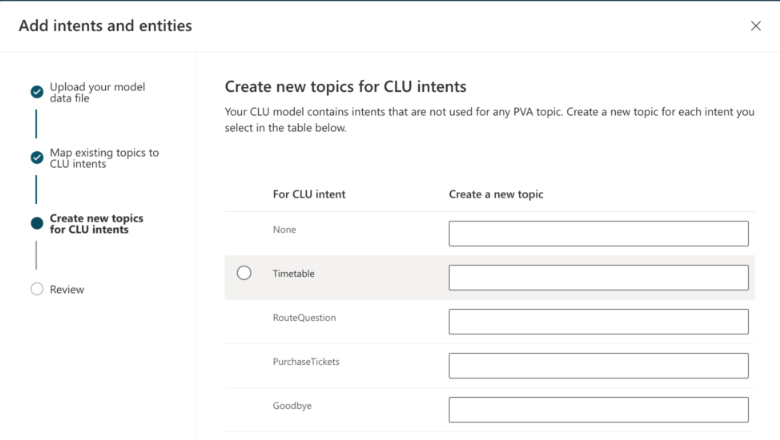Use conversational language understanding to improve bots
Important
This content is archived and is not being updated. For the latest documentation, go to Power Virtual Agents overview. For the latest release plans, go to Dynamics 365, Power Platform, and Cloud for Industry release plans.
| Enabled for | Public preview | General availability |
|---|---|---|
| Users by admins, makers, or analysts |  May 23, 2023
May 23, 2023 |
 Sep 23, 2023
Sep 23, 2023 |
Business value
You can use custom conversational language understanding (CLU) models in Power Virtual Agents, Microsoft's Conversational AI chatbot-building canvas, to expand and refine how your bots parse and respond to user queries. Your customers will have higher overall satisfaction, and you'll spend less time on analyzing and resolving abandoned, escalated, and failed conversations.
Feature details
CLU enables users to build custom natural language understanding models to predict the overall intention of an incoming utterance and extract important information from it.
CLU only provides the intelligence to understand the input text for the client application and doesn't perform any actions. By creating a CLU project, developers can iteratively label utterances and train and evaluate model performance before making it available for consumption.
By integrating CLU into Power Virtual Agents, bot builders can now leverage CLU in their projects. This means bot builders will have CLU-specific support for all of the native functionalities in Power Virtual Agents, including dialog triggering, interruptions, "did you mean" interpretation, and slot filling. CLU integration can be configured with a built-in onboarding tool that can create and map CLU intents and entities to Power Virtual Agents bot topics, and can be used in combination with prebuilt entities for all supported Power Virtual Agents languages.

See also
Conversational language understanding integration overview (docs)